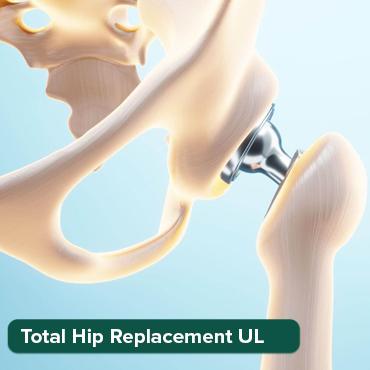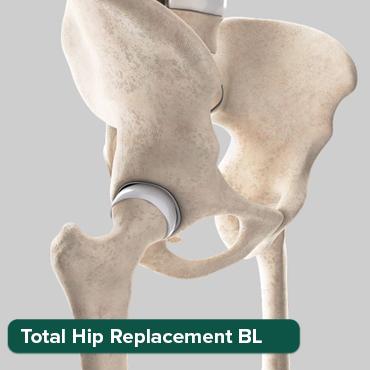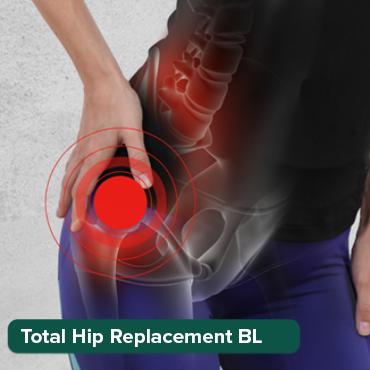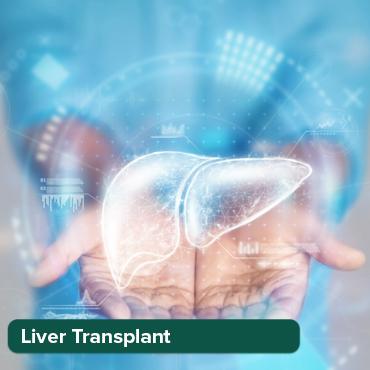
Exercise Plans After Plastic Surgery Recommended by Healthtrip
02 Aug, 2025
 Healthtrip
Healthtrip- Walking After Surgery: Your First Step to Recovery
- When Can You Start Exercising After Plastic Surgery? < li>Exercises to Avoid After Plastic Surgery
- Safe and Effective Low-Impact Exercises
- Sample Exercise Plans After Different Procedures < li>Healthtrip's Expert Exercise Recommendations
- Hospitals That Support Your Post-Surgery Recovery
- Conclusion: Embracing Your Post-Surgery Fitness Journey
Understanding the Importance of Exercise After Surgery
After undergoing a procedure at a facility like LIV Hospital, Istanbul, your body needs time to heal. However, prolonged inactivity can lead to weakened muscles, stiffness, and even blood clots. Gentle exercises, approved by your surgeon, can stimulate blood flow, reduce swelling, and promote faster healing. Think of it as jump-starting your body's natural recovery mechanisms. These early movements can also help prevent complications such as pneumonia and constipation, common concerns after surgery. Healthtrip offers a range of resources to help you understand the specific exercise guidelines for your particular procedure, ensuring you're always informed and empowered to make the best choices for your recovery. It’s all about finding that sweet spot between rest and gentle activity, carefully balancing your need to heal with the benefits of movement.
Transform Your Beauty, Boost Your Confidence
Find the right cosmetic procedure for your needs.

We specialize in a wide range of cosmetic procedures

Creating a Safe and Effective Exercise Plan
Designing an appropriate exercise plan after surgery requires careful consideration and collaboration with your healthcare team, especially the surgeons at facilities like Yanhee International Hospital. The type of surgery you had, your overall health, and your individual recovery progress will all influence the types and intensity of exercises you can safely perform. Generally, the initial phase focuses on gentle movements like walking, stretching, and range-of-motion exercises. As you heal, you can gradually introduce more challenging activities, such as light weightlifting or swimming. Healthtrip connects you with experienced physiotherapists and rehabilitation specialists who can create a customized exercise plan tailored to your specific needs and recovery goals. They'll guide you through each exercise, ensuring proper form and technique to minimize the risk of injury and maximize the benefits. Remember, it's not a race; it's a marathon. Listening to your body and progressing gradually is key to a successful and safe recovery.
Types of Exercises to Incorporate
Early Stage Exercises (First Few Weeks)
In the immediate post-operative period, the focus is on promoting circulation and preventing complications. Gentle walking is highly recommended, starting with short distances and gradually increasing as tolerated. Simple range-of-motion exercises, such as ankle pumps and wrist circles, can also improve blood flow. Deep breathing exercises are crucial for preventing pneumonia. Imagine you are in one of the recovery rooms at NMC Specialty Hospital, Al Nahda, Dubai; even there, these small movements can make a big difference. Healthtrip provides detailed instructions and videos demonstrating these exercises, making it easy to incorporate them into your daily routine. The aim is to gently coax your body back into action without putting any undue stress on the surgical site. These early movements are like a gentle nudge, reminding your body that it's time to wake up and start the healing process.
Intermediate Stage Exercises (Weeks 4-8)
As you progress in your recovery, you can gradually introduce more challenging exercises. Light strength training, using resistance bands or small weights, can help rebuild muscle strength and improve stability. Core strengthening exercises, such as pelvic tilts and gentle abdominal contractions, are also beneficial. Low-impact cardio activities, such as cycling or swimming, can improve cardiovascular fitness without putting excessive strain on your joints. Healthtrip offers access to a network of fitness professionals who specialize in post-operative rehabilitation, ensuring you have the guidance and support you need to progress safely and effectively. You might be surprised at how quickly your body adapts and regains its strength. Think of this stage as rebuilding a bridge, brick by brick, slowly but surely restoring your body to its pre-surgery condition, or even better.
Most popular procedures in India
Total Hip Replacemen
Upto 80% off
90% Rated
Satisfactory

Total Hip Replacemen
Upto 80% off
90% Rated
Satisfactory

Total Hip Replacemen
Upto 80% off
90% Rated
Satisfactory

ASD Closure
Upto 80% off
90% Rated
Satisfactory

Liver Transplant Sur
Upto 80% off
90% Rated
Satisfactory

Advanced Stage Exercises (8 Weeks and Beyond)
Once you've reached the advanced stage of recovery, you can gradually return to your pre-surgery exercise routine, with guidance and approval from healthcare providers such as those affiliated with Fortis Hospital, Noida. This may include more intense strength training, high-impact cardio activities, and sports-specific exercises. However, it's important to listen to your body and avoid pushing yourself too hard too soon. Continue to incorporate stretching and flexibility exercises to maintain range of motion and prevent injuries. Healthtrip offers resources and support to help you transition back to your active lifestyle safely and confidently. It's about reclaiming your body and your life, feeling empowered and strong. Remember, the journey doesn't end here; it's just the beginning of a new chapter in your fitness journey, one where you're more aware of your body and its capabilities than ever before.
Listening to Your Body and Preventing Setbacks
The most important aspect of any post-operative exercise plan is listening to your body. Pain is a signal that something is wrong, so don't ignore it. If you experience pain or discomfort during exercise, stop immediately and consult with your doctor or physical therapist. It's also crucial to avoid overdoing it, especially in the early stages of recovery. Gradually increase the intensity and duration of your workouts as tolerated. Healthtrip emphasizes the importance of patience and self-compassion during the recovery process. Set realistic goals, celebrate your progress, and don't be discouraged by setbacks. After all, recovery is not a linear process, and there will be good days and bad days. What's important is that you keep moving forward, one step at a time, with the support and guidance of Healthtrip and your healthcare team. Consider that you're investing in yourself, in your health and well-being, and that every effort, no matter how small, is a step in the right direction. Many patients recovering in places like Saudi German Hospital Cairo, Egypt have found that small steps make big impacts.
Walking After Surgery: Your First Step to Recovery
Undergoing surgery, whether it's a cosmetic procedure or a necessary medical intervention, can be a significant event in your life. As you prepare for the procedure, you're likely focused on the surgery itself and the anticipated results. However, the recovery period is equally crucial, and one of the most effective tools you have at your disposal is something incredibly simple: walking. Walking after surgery isn't just about getting from point A to point B; it's a vital component of your healing journey. It kickstarts your circulation, prevents complications like blood clots, and gently eases your body back into its natural rhythm. Think of it as your body's way of saying, "Okay, we've been through a lot, but let's get moving again!" This initial movement, even if it's just a gentle stroll around your room, can significantly impact your overall recovery experience. Healthtrip understands the importance of a smooth and informed recovery, connecting you with hospitals like Vejthani Hospital and Bangkok Hospital, where post-operative care emphasizes early ambulation to expedite healing.
The benefits of walking extend beyond just the physical. It can also have a profound impact on your mental and emotional well-being. Surgery can sometimes leave you feeling vulnerable, anxious, or even a little down. Getting up and moving around releases endorphins, those natural mood boosters that can help combat feelings of sadness or stress. Furthermore, walking gives you a sense of control over your recovery. It's a tangible action you can take to actively participate in your healing process. This feeling of agency can be incredibly empowering, helping you to feel more optimistic and in charge of your journey back to full health. Remember, even small steps can make a big difference! Don't push yourself too hard initially, but aim for consistent, gentle walks each day, gradually increasing the duration and intensity as you feel stronger. Healthtrip is here to support you in finding the best post-operative care options, connecting you with facilities like Fortis Hospital, Noida, where comprehensive rehabilitation programs are designed to optimize your recovery.
Before you lace up those walking shoes, it's essential to consult with your surgeon or healthcare team. They can provide personalized guidance based on the specific type of surgery you underwent, your overall health, and any potential complications you might be facing. Your doctor will be able to tell you when it's safe to start walking, how often you should walk, and what warning signs to look out for. It's also crucial to listen to your body. Don't try to be a hero and push yourself beyond your limits. If you experience pain, dizziness, or any other concerning symptoms, stop immediately and rest. Remember, recovery is a marathon, not a sprint! Focus on making steady progress and celebrating small victories along the way. And remember, Healthtrip can help you find resources and support to make your post-operative experience as smooth and comfortable as possible, directing you to hospitals like Max Healthcare Saket that prioritize patient education and comprehensive post-operative care.
When Can You Start Exercising After Plastic Surgery?
Ah, the million-dollar question! You've had your plastic surgery, you're starting to see the results, and you're itching to get back into your fitness routine. But hold your horses! Rushing into exercise too soon after plastic surgery can actually hinder your healing process and potentially compromise your results. The key is patience and a gradual, well-planned re-entry into physical activity. Think of your body as a construction site. It's undergone some significant renovations, and you need to give it time to properly heal and stabilize before you start putting it through its paces again. So, when exactly can you start exercising? The answer, unfortunately, isn't a one-size-fits-all. It depends on several factors, including the type of surgery you had, your overall health, and how your body is responding to the healing process. Healthtrip understands that every patient's recovery journey is unique, which is why we connect you with experienced medical professionals at hospitals like Memorial Sisli Hospital who can provide personalized guidance on when and how to safely resume exercise.
Generally speaking, most surgeons recommend avoiding strenuous exercise for at least 4-6 weeks after surgery. This allows your incisions to heal properly, reduces the risk of complications like bleeding or infection, and gives your body time to recover from the trauma of the procedure. During this initial period, focus on light activities like walking, as mentioned earlier. As you progress through your recovery, you can gradually introduce more challenging exercises, always listening to your body and paying attention to any pain or discomfort. It's also crucial to communicate openly with your surgeon throughout this process. They can assess your progress, adjust your exercise plan as needed, and identify any potential issues early on. Remember, the goal is to enhance your results, not jeopardize them! Healthtrip partners with hospitals like Saudi German Hospital Cairo that offer comprehensive post-operative support, including consultations with physical therapists who can help you design a safe and effective exercise program tailored to your specific needs.
Before you jump back into your pre-surgery workout routine, it's wise to ease into things with gentler exercises and low-impact activities. Swimming, yoga, and light cycling are great options to consider. These activities are easier on your body and promote circulation without putting excessive strain on your healing tissues. Remember, consistency is key. A little bit of exercise done regularly is far more beneficial than sporadic bursts of intense activity. As you become more comfortable, you can gradually increase the intensity and duration of your workouts. Be patient with yourself, celebrate your progress, and don't be afraid to take rest days when you need them. Your body will thank you for it! And don't forget that Healthtrip is here to support you every step of the way, connecting you with resources and facilities like LIV Hospital, Istanbul with specialized rehabilitation programs to help you regain your strength and confidence after surgery.
Exercises to Avoid After Plastic Surgery
Okay, so we’ve established that exercise is important for recovery, but knowing what *not* to do is just as crucial, if not more so! After plastic surgery, your body is in a delicate state, and certain types of exercises can put undue stress on your healing tissues, potentially leading to complications like wound dehiscence (when your incisions open up), increased swelling, or even implant displacement. Think of it like this: your body is a precious piece of art that's undergoing restoration. You wouldn't want to use harsh chemicals or abrasive tools that could damage the masterpiece, would you? Similarly, you need to be gentle and mindful of the exercises you choose after surgery. So, what are the exercises to avoid? Generally, you should steer clear of any activities that involve heavy lifting, strenuous cardio, or direct impact to the surgical area. Healthtrip understands the anxieties surrounding post-operative recovery, and we partner with hospitals like Vejthani Hospital where healthcare professionals provide detailed instructions, including specific exercises to avoid based on your individual procedure.
Specifically, avoid lifting heavy weights or engaging in activities that put a strain on your chest or abdominal muscles after breast augmentation, breast reduction, or abdominoplasty (tummy tuck). This includes exercises like push-ups, pull-ups, bench presses, and sit-ups. These exercises can put excessive pressure on your incisions and internal sutures, potentially disrupting the healing process. Similarly, avoid high-impact activities like running, jumping, or aerobics, especially after procedures like liposuction or body contouring. These activities can increase swelling and discomfort, and may even lead to fluid accumulation in the surgical area. After facial procedures like facelifts or rhinoplasty (nose job), avoid any activities that could potentially cause trauma to the face, such as contact sports or vigorous head movements. Your face will be particularly sensitive during the initial stages of healing, and any impact could compromise the results of your surgery. Healthtrip is dedicated to providing comprehensive information to empower patients during their medical journeys, facilitating access to experts at hospitals like Yanhee International Hospital who can help guide you through the dos and don'ts of post-operative exercise.
Remember, it's always best to err on the side of caution and avoid any exercises that you're unsure about. If you're not sure whether a particular activity is safe, consult with your surgeon or a qualified physical therapist. They can assess your individual situation and provide personalized recommendations based on your needs. Ultimately, your goal should be to support your body's natural healing process, not to sabotage it. By choosing your exercises wisely and listening to your body, you can safely and effectively regain your strength and fitness after plastic surgery. And remember, Healthtrip is your trusted partner in navigating your healthcare journey, connecting you with reputable facilities like Fortis Memorial Research Institute, Gurgaon that prioritize patient safety and provide comprehensive post-operative care to optimize your recovery.
Also Read:
Exercises to Avoid After Plastic Surgery
Navigating the world of exercise after plastic surgery requires a delicate balance. You're eager to get back to your routine, to feel like yourself again, but pushing too hard can jeopardize your recovery and the results you've invested in. Think of your body as a finely tuned instrument, and post-surgery, it needs gentle coaxing, not a jarring performance. High-impact activities like running, jumping, or anything that involves a lot of bouncing should be off the table for a while. These put unnecessary stress on the surgical area, potentially disrupting the healing process and increasing the risk of complications such as swelling, bleeding, or even displacement of implants. Similarly, heavy lifting is a no-go. Imagine trying to lift a heavy box right after abdominal surgery – the strain on your abdominal muscles could be excruciating and could hinder proper healing. It's not just about the weight itself, but also the force it exerts on your body. Exercises that target the surgical area directly, such as crunches after a tummy tuck or chest presses after breast augmentation, should be avoided until your surgeon gives you the green light. The goal is to protect the surgical site and allow it to heal without undue stress or tension. Remember, patience is key, and a gradual return to exercise is always the best approach. Healthtrip can connect you with top-notch medical professionals at hospitals like Memorial Bahçelievler Hospital and LIV Hospital, Istanbul who can provide personalized guidance tailored to your specific procedure and recovery timeline, ensuring you stay on the right track.
Safe and Effective Low-Impact Exercises
So, what *can* you do? The good news is that low-impact exercises can be your best friends during recovery. These activities promote blood circulation, boost your mood, and help maintain your fitness level without putting excessive strain on your body. Walking is a fantastic starting point. It's gentle, accessible, and can be easily adjusted to your comfort level. Start with short, slow walks around your house or neighborhood, gradually increasing the duration and intensity as you feel stronger. Yoga is another excellent option, but with modifications. Focus on gentle stretching and poses that don't put pressure on the surgical area. Avoid inversions or poses that require you to bear weight on your chest or abdomen. Pilates can also be beneficial, particularly for strengthening your core, but again, be mindful of modifications and avoid exercises that directly target the surgical site. Water aerobics is a great choice because the buoyancy of the water reduces stress on your joints and allows for a wider range of motion. Swimming, once your incisions are fully healed, is another fantastic full-body workout that's gentle on your body. Remember to listen to your body and stop if you feel any pain or discomfort. The aim is to support your recovery, not set it back. Healthtrip understands that every individual's journey is unique. We can help you find the right support system, connecting you with specialists at facilities like Yanhee International Hospital and Vejthani Hospital who can tailor exercise recommendations to your specific needs and ensure a safe and effective recovery.
Sample Exercise Plans After Different Procedures
To give you a clearer picture, let's look at some sample exercise plans tailored to different procedures. After breast augmentation, your initial focus should be on gentle walking to promote circulation and reduce swelling. Avoid any upper body exercises for at least 4-6 weeks. Gradually reintroduce light arm movements, like gentle stretches, after your surgeon approves it. After a tummy tuck, walking is again your starting point. Because this surgery involves tightening the abdominal muscles, avoid any core exercises for at least 6-8 weeks. As you heal, you can gradually reintroduce gentle core work, like pelvic tilts and modified planks, always listening to your body and stopping if you feel any pain. For liposuction, you can usually start walking within a few days of the procedure. Compression garments are often recommended to help reduce swelling and promote healing. Avoid strenuous exercise for at least 2-4 weeks, gradually reintroducing activities as you feel comfortable. Remember, these are just examples, and your individual exercise plan should be tailored to your specific procedure, recovery progress, and surgeon's recommendations. It's crucial to have an open dialogue with your healthcare team and follow their guidance closely. Healthtrip is committed to providing you with access to the best medical care and resources. We partner with leading hospitals like Fortis Escorts Heart Institute and Fortis Shalimar Bagh to ensure you receive personalized attention and comprehensive support throughout your recovery journey. Consider exploring facilities like Taoufik Clinic, Tunisia, where comprehensive post-operative care is prioritized.
Healthtrip's Expert Exercise Recommendations
At Healthtrip, we understand that navigating post-operative care can feel overwhelming. That's why we're committed to providing you with expert guidance and support every step of the way. Our team of experienced medical professionals recommends starting slow and gradually increasing your activity level as you heal. Listen to your body and don't push yourself too hard. Pain is your body's way of telling you to slow down. Stay hydrated by drinking plenty of water. Hydration is essential for healing and can help reduce swelling. Wear compression garments as recommended by your surgeon. Compression garments help reduce swelling, support the surgical area, and promote healing. Maintain a healthy diet rich in fruits, vegetables, and lean protein. Proper nutrition is crucial for tissue repair and overall recovery. Attend all your follow-up appointments with your surgeon. These appointments allow your surgeon to monitor your progress and make any necessary adjustments to your recovery plan. Remember, recovery is a marathon, not a sprint. Be patient with yourself and celebrate your progress along the way. Healthtrip is here to connect you with the resources and support you need to achieve a successful and fulfilling recovery. We can help you find qualified medical professionals, locate reputable hospitals like Saudi German Hospital Alexandria, Egypt and Saudi German Hospital Cairo, Egypt, and access valuable information to guide you through your post-operative journey.
Hospitals That Support Your Post-Surgery Recovery
Choosing the right hospital for your post-surgery recovery is just as important as selecting the right surgeon. You want a facility that provides comprehensive care, a supportive environment, and access to skilled medical professionals who can guide you through your recovery journey. Look for hospitals that offer specialized post-operative programs, including physical therapy, pain management, and nutritional counseling. These programs can help you regain your strength, manage pain effectively, and optimize your healing. A supportive and compassionate nursing staff can make a world of difference in your recovery experience. Look for hospitals with a reputation for providing excellent patient care and a nurturing environment. Access to advanced medical technology and resources can also be beneficial, particularly if you experience any complications. Hospitals with state-of-the-art equipment and experienced specialists can provide you with the best possible care. Healthtrip partners with a network of leading hospitals around the world that are committed to providing exceptional post-operative care. Facilities like Quironsalud Hospital Toledo and Jiménez Díaz Foundation University Hospital offer comprehensive programs and a supportive environment to help you recover safely and effectively. Consider exploring options like Bangkok Hospital and BNH Hospital for world-class care and dedicated recovery support. We understand that choosing the right hospital can be a daunting task. That's why our team of experts is here to help you navigate your options and find the facility that best meets your individual needs and preferences.
Also Read:
Conclusion: Embracing Your Post-Surgery Fitness Journey
Recovering from plastic surgery is a journey, not a destination. It's a process that requires patience, self-compassion, and a commitment to following your surgeon's recommendations. By understanding the exercises to avoid, embracing safe and effective low-impact activities, and tailoring your exercise plan to your specific procedure, you can support your recovery and achieve the best possible results. Remember, your body is unique, and your recovery journey will be unique as well. Listen to your body, be patient with yourself, and celebrate your progress along the way. Healthtrip is here to empower you with the knowledge, resources, and support you need to navigate your post-surgery fitness journey with confidence. We believe that everyone deserves access to quality healthcare and personalized guidance. That's why we're committed to connecting you with the best medical professionals, reputable hospitals, and valuable information to help you achieve your health and wellness goals. Whether you're recovering from breast augmentation, a tummy tuck, liposuction, or any other plastic surgery procedure, Healthtrip is your trusted partner every step of the way. Embrace your journey, prioritize your health, and let us help you achieve a successful and fulfilling recovery.
Wellness Treatments
Give yourself the time to relax
Lowest Prices Guaranteed!

Lowest Prices Guaranteed!
